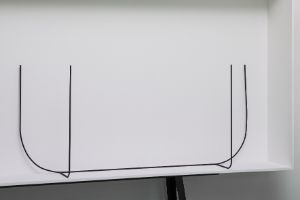Exhibition
Thea Djordjadze: all building as making

Thea Djordjadze. He ne sa tu to me., 2014 (detail). Wood, steel, plaster, paint © Thea Djordjadze / VG Bild-Kunst, Bonn; courtesy: Sprüth Magers
Thea Djordjadze’s artistic practice can be understood as a process of continually reusing, reconfiguring and rearranging objects. The Gropius Bau hosted an extensive exhibition of the Berlin-based artist’s work which engaged in a dialogue with the historic building.
Influenced in equal measure by historical artefacts and concepts of modern art and architecture, Thea Djordjadze’s sculptural works are characterised by formal ruptures and an idiosyncratic material aesthetic. By combining materials such as plaster, metal, foam, textiles, wood or papier-mâché, Djordjadze creates fragmentary spatial settings in which she reformulates the classic display – vitrine, plinth, framing and pedestal – as a recurrent theme in her work. The Gropius Bau presented an extensive exhibition of Djordjadze’s work in its spaces, among them the so-called Schliemann Saal, once home to Heinrich Schliemann’s excavated archaeological findings between 1881 and 1885. Existing and newly created works engaged in a dialogue with these historical spaces and past archaeological exhibitions at the Gropius Bau.
Curated by Julienne Lorz
Kindly supported by FreifrauManufaktur
Partners: Wall, Bouvet
Media partners: BerlinArt Link, MissyMagazine, KubaParis, InYour Pocket, MousseMagazine